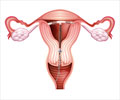Along with poverty and under-education, Nepal affected by cultural preference of sons over daughters, causing an increase in maternal and child mortality rates.

Young wives in Nepal were among those least likely to use contraceptives, 24 percent of wives ages 20-24 and just 14 percent of wives ages 15 to 19 years old. These low percentages, said first author Anita Raj, PhD, professor of medicine in the UC San Diego School of Medicine, were particularly notable among young wives who did not have any sons.
"Daughter aversion" reflects a profound, historical cultural bias in Nepal and in other central and south Asian countries, said Raj, an international authority on gender issues in the region. Part of the reason is financial, she said. Males traditionally enjoy greater economic opportunity.
"But tradition also says sons take care of parents," Raj said. "Daughters are supposed to leave the family and become the daughter of the in-laws, no longer the daughter of the parents. Practices like that are going to affect investment in your daughters."
Raj said son preference was worrisome for a couple of reasons. First, it persists even with improvements in education. Second, it remains strong among the youngest Nepalese wives.She suggested the latter effect may be due, in part, to the influence of older generations.
"Even after adjusting for child marriage, you see it. Girls who marry younger may be more vulnerable to son preference because they are more likely to have their reproductive decision-making affected – or controlled – by older husbands and in-laws, both of whom may desire sons from these young wives," she said.
Advertisement
The cross-sectional study was based on data from the 2011 Nepal Demographic and Health Survey, which found that only one in five married adolescent and young women used modern contraception. Rates were lowest among women who resided in rural areas, lacked education or social status, were married as minors or had no sons.
Advertisement












